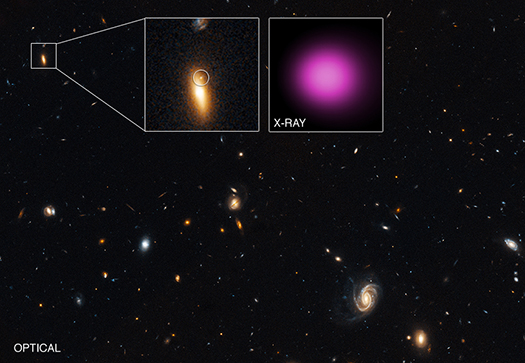The Billion-year Race Between Black Holes and Galaxies: Guang Yang
Submitted by chandra on Wed, 2018-02-14 13:13
Guang Yang
We welcome Guang Yang, a 4th-year Astronomy graduate student at Penn State, as a guest blogger. Guang led one of the two studies reported in our new press release about the evolution of supermassive black holes and galaxies. Before studying at Penn State, he obtained his astronomy B.S. degree at the University of Science and Technology of China.
Supermassive black holes, with masses over million times that of our sun, sit in the centers of galaxies. The evolution of these black holes and their host galaxies in the past billions of years of cosmic history is still an unsolved mystery. A prevailing idea is that black hole growth is synchronized with host-galaxy growth, i.e., the ratio between black hole and galaxy growth is constant. "What a beautiful theory," I told my advisor Prof. Niel Brandt, and colleagues Dr. Chien-Ting Chen and Dr. Fabio Vito. "But is it true?” I asked. “Has someone proved it?"
We searched large amounts of literature but did not find dedicated works proving the idea, although it is widely quoted in published papers. "Then why not prove it with observations?" said my advisor. "It can be a great thesis topic for you." I was so happy that my thesis topic was settled and I even dreamed about how our data might nicely support the theory.
We painstakingly analyzed a large amount of data in the Chandra Deep Field-South & North and COSMOS surveys. We successfully tracked the black hole and galaxy growth in the distant universe with NASA's Chandra, Hubble, Spitzer, and other observatories. The observations are so deep that we can study the evolution of black holes and their host galaxies 12 billion years in the past, when the Universe was less than 15% of its current age.









